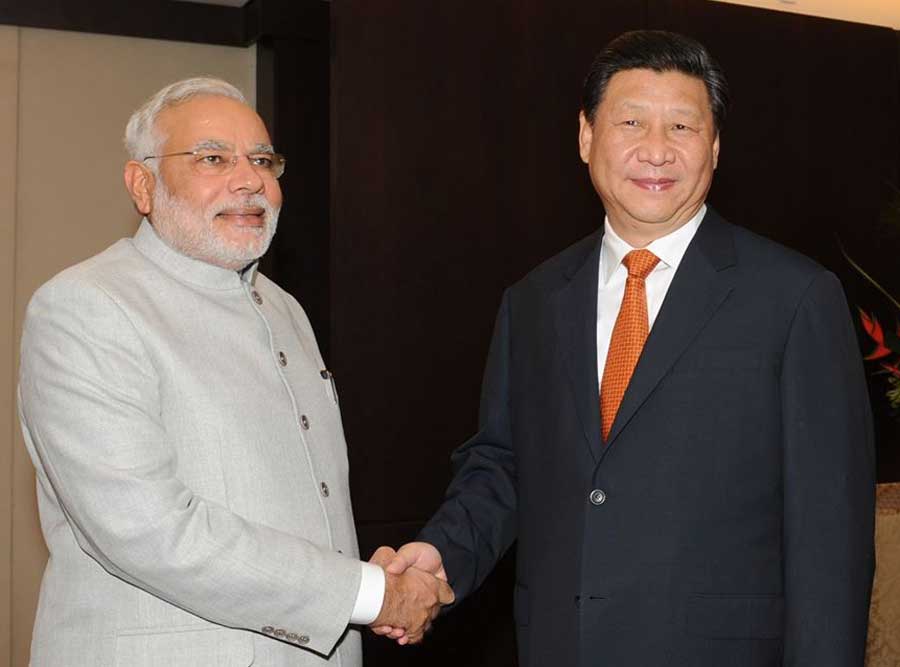 The forthcoming “informal summit” between Prime Minister Narendra Modi and Chinese President Xi Jinping in Wuhan this weekend has surprised observers and many have even compared it to the breakthrough meeting that took place between Prime Minister Rajiv Gandhi and Chinese strongman Deng Xiaoping in December 1988 that led to a resumption in dialogue between the countries, almost 26 years after a bruising war over the Himalayas.
The forthcoming “informal summit” between Prime Minister Narendra Modi and Chinese President Xi Jinping in Wuhan this weekend has surprised observers and many have even compared it to the breakthrough meeting that took place between Prime Minister Rajiv Gandhi and Chinese strongman Deng Xiaoping in December 1988 that led to a resumption in dialogue between the countries, almost 26 years after a bruising war over the Himalayas.
The Modi-Xi meeting has been described variously as an occasion for a “heart to heart” chat, without any formal structure, and an opportunity for “strategic communication” between the leaders of the world’s two most populous nations, and two of its largest economies, who stood on the brink of a military conflict in disputed Bhutanese territory last year. Both leaders seem determined to see there is no repeat of that crisis as the 73-day eyeball-to-eyeball face-off was seen in both capitals as too close to call.
That there are major differences between the two sides needs no reiteration. Besides their irreconcilable perspectives on the disputed border, over the Dalai Lama, over their approaches to terrorism, over India’s membership of the Nuclear Suppliers’ Group, over Pakistan. India is now being seen as the odd-man-out over the Belt and Road Initiative (BRI), China’s most ambitious international outreach to date. At the ministerial meeting of the 10-member Shanghai Cooperation Organisation (SCO) in Beijing, India was the only country that did not endorse the BRI while the rest, namely all Central Asian countries and Pakistan, heartily “reaffirmed support” for it.
Sections of the Chinese media, usually hostile to India, have welcomed the Wuhan meeting with the Global Times saying it could be “as significant as the one in 1988” between Gandhi and Deng. It saw in the meeting “India changing its radical attitude towards China” and said the two countries need to restore mutual trust to avoid “another border crisis” like the one at Doklam.
How much of the Modi-Xi tete-a-tete would be devoted to the BRI – a pet project of XI – remains to be seen, but India’s steadfast opposition to it has not gone down well in Beijing. No other country has opposed the BRI as strongly as India although the US and some European countries have expressed some reservations over it without opposing it totally. Instead, India has sought to highlight its own intra-regional connectivity projects with South and Southeast Asian nations.
In fact, Christine Lagarde, the IMF’s managing director, warned Chinese policymakers of the potential debt burden that many countries would face because of their involvement in BRI. According to a report by the Washington Center for Global Development, eight countries on the BRI routes, including Pakistan and the Maldives, may already have trouble servicing debt due to large borrowings from China. According to a Financial Times report, the study found 23 countries to be “at risk of debt distress today” due to Belt and Road borrowing.
Nevertheless, the IMF also unveiled a project to support the BRI with Ms Lagarde announcing the opening of a China-IMF Capacity Development Center which will help train Chinese development officials to work abroad. The BRI project is expected to touch about 70 countries in Asia, Africa and Europe.
While dramatic decisions cannot be ruled out, given the fact that Modi especially needs to take back some tangibles from a much-hyped summit as he approaches crucial national elections, there is also the danger of raising undue expectations – as he had done after an unscheduled and unstructured stopover in Lahore in December 2015 to greet and meet then Pakistan Prime Minister Nawaz Sharif – and then facing the bitter reality which can be politically self-defeating.
There is no doubt Beijing is worried over the growing strategic convergence and partnership between the US and India and would like to know at the highest level from Delhi its orientation towards issues crucial to it in the larger Indo-Pacific and Indian Ocean Region. Chinese media has said that India “should avoid being a pawn” to the US, with Chinese analysts often expressing apprehensions over the larger strategic ramifications of the Quad – US, Japan, Australia and India – confabulations and whether these were aimed at “containing Beijing’s rise”.
With the strategic vision between the two countries remaining quite divergent – although there is quiet, unpublicised understanding over the growing business and investment relationship despite the yawning trade deficit – a headline-grabbing joint statement may be too much to expect.
Therefore, the best that can be expected is bench-marking of the official line that was echoed by Defence Minister Nirmala Sitharaman in Beijing at her meeting with her Chinese counterpart that “at a time of global uncertainty, India-China relations could be a factor of stability and that we must not allow our differences to become disputes”.
Courtesy: http://southasiamonitor.org/news/don-t-expect-too-much-from-modi-xi-meeting/sl/27090




